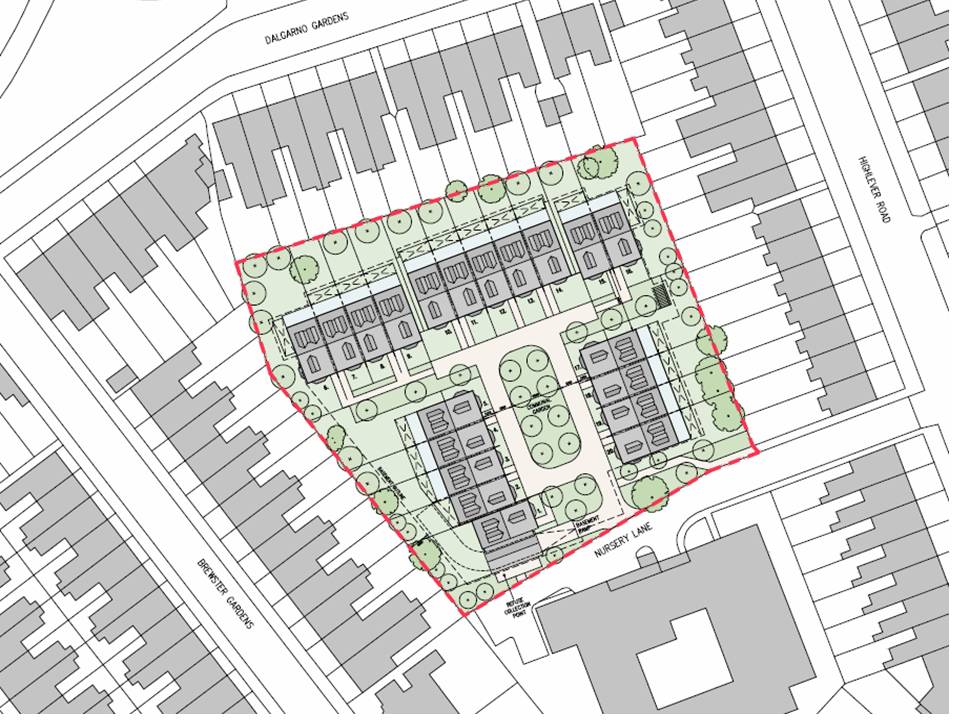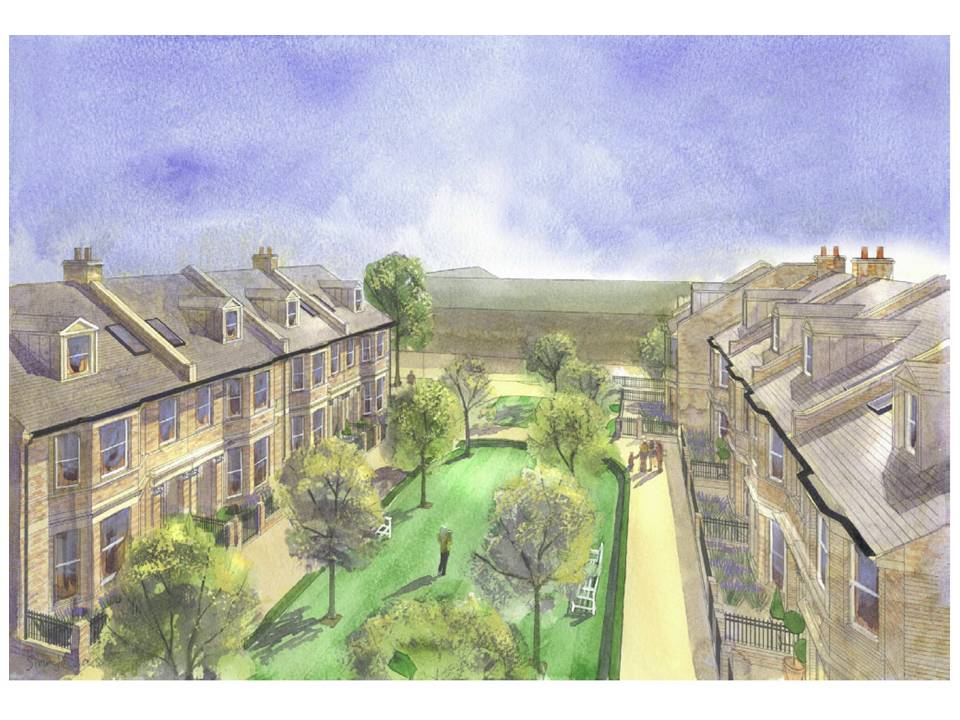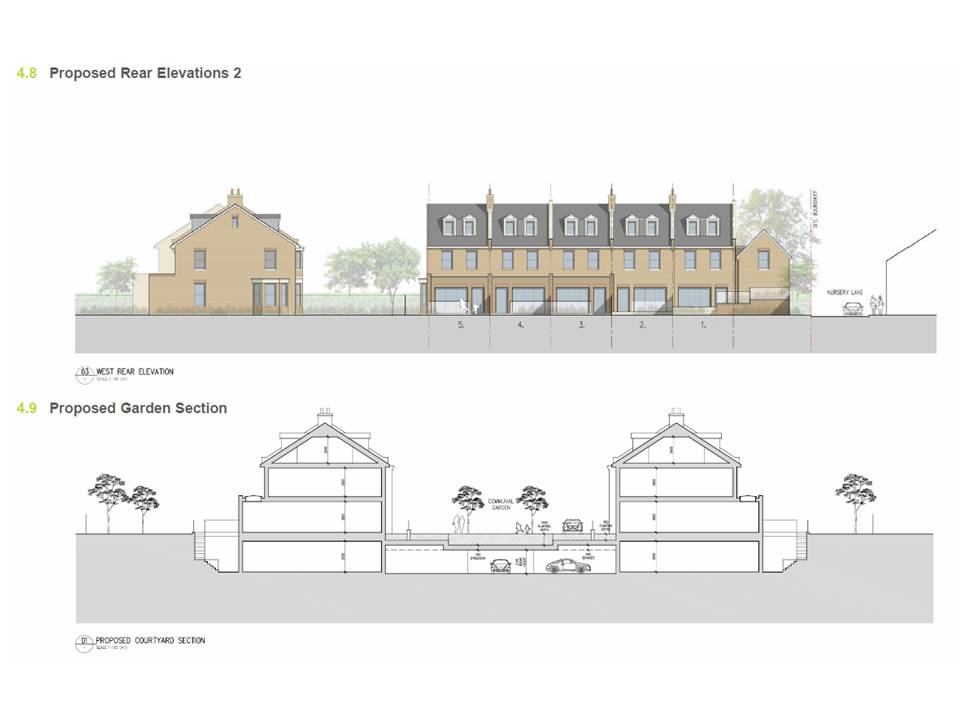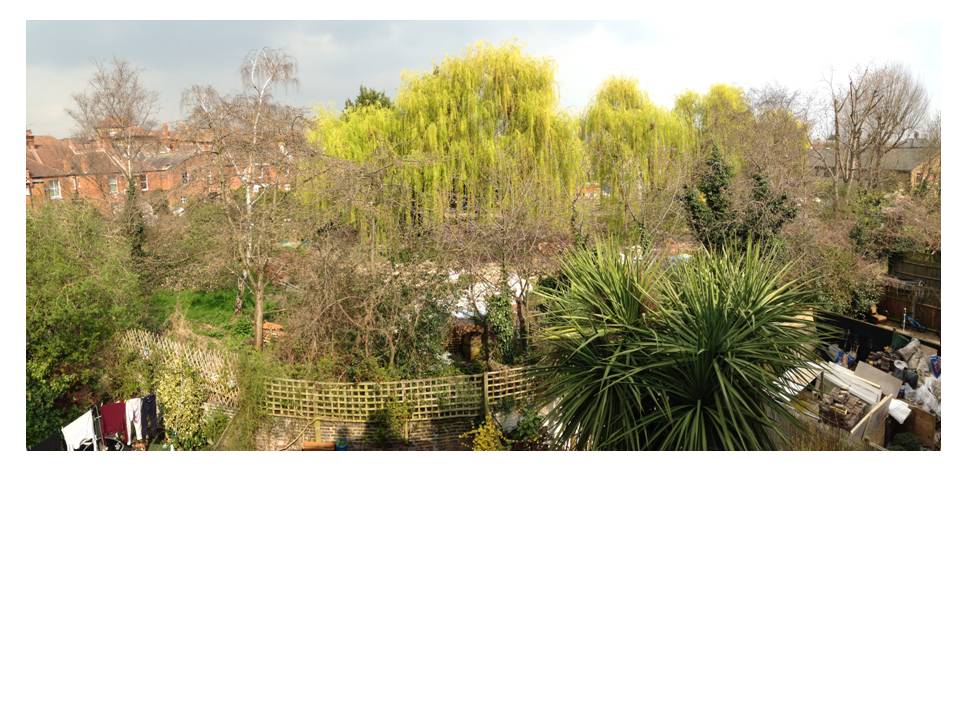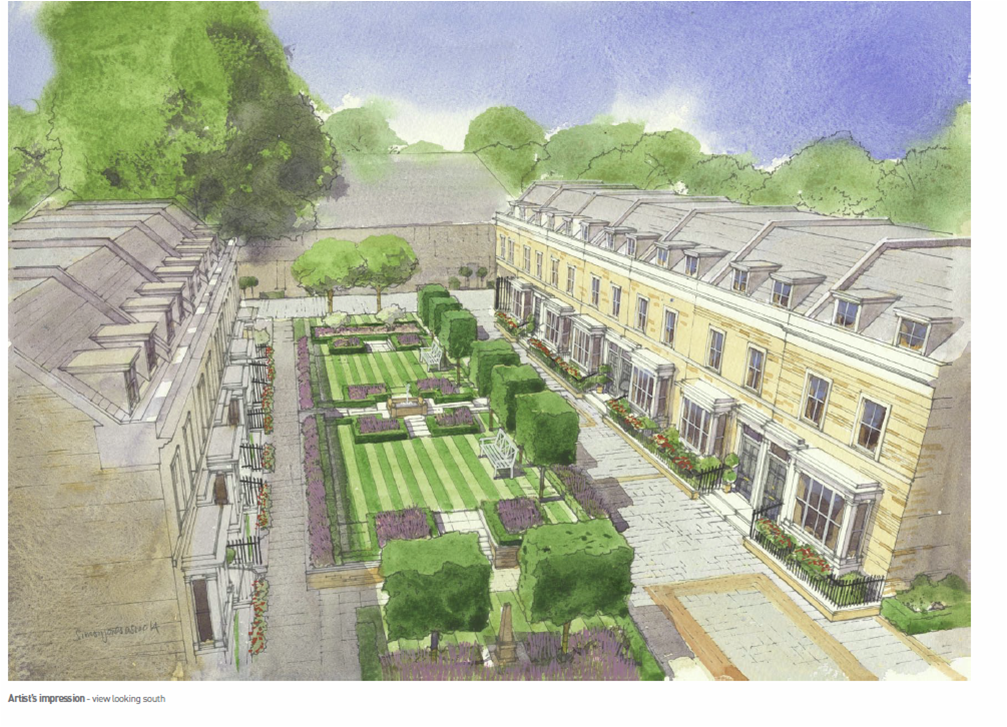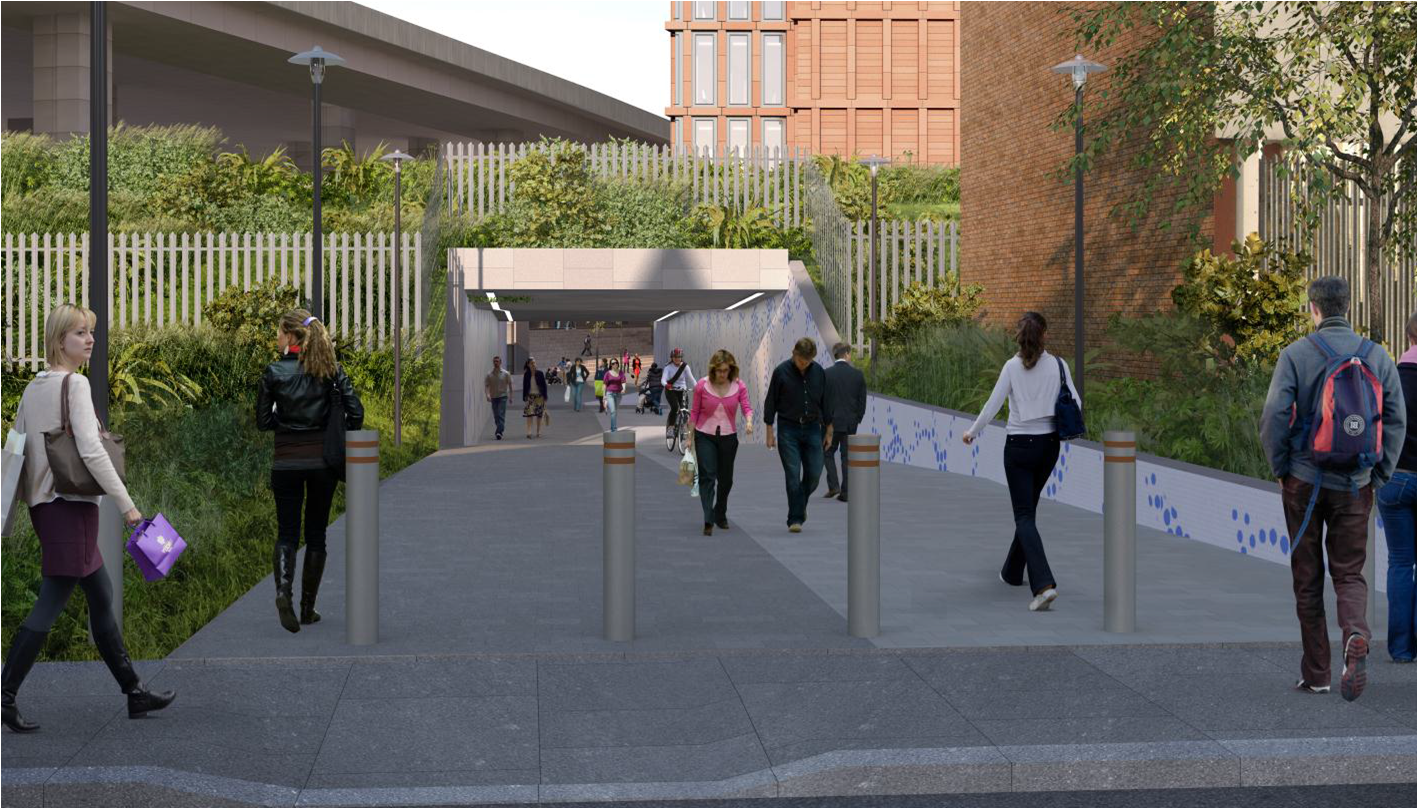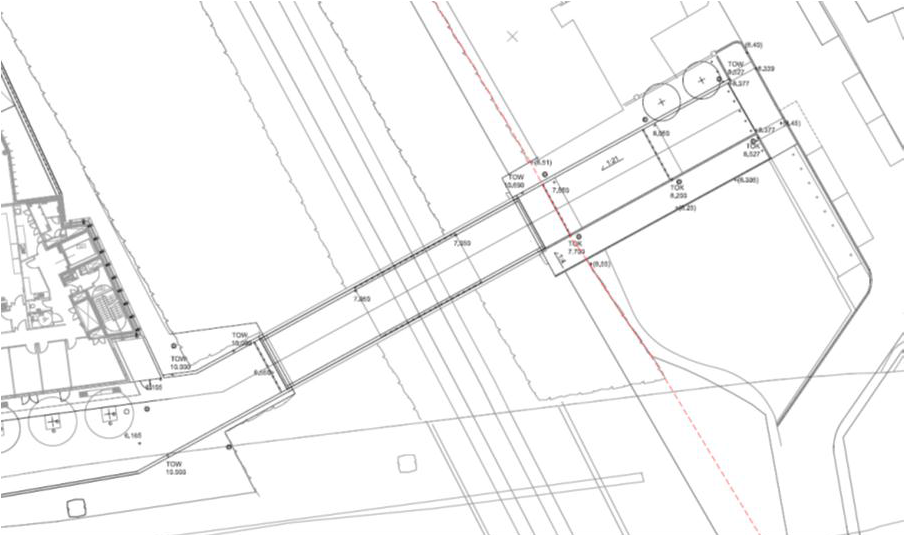An application has been filed for judicial review of the decision by Kensington and Chelsea Council to advance the StQW Draft Plan to a local referendum on February 25th 2016.
This is not wholly unexpected. It was clear that some parties were going to be very unhappy about the decision of the independent examiner of the StQW Plan, that the remaining three St Quintin ‘backlands’ meet the national criteria to be designated as ‘Local Green Space’.
The judicial review application has been filed by William Legard, as one of the members of the Legard family registered as owners of the land at Nursery Lane. It is not yet clear whether Metropolis Property Ltd, the developer who submitted a planning application last May to build 21 townhouses on this green space, will take an active part in the legal case.
The Legard family was informed in December 2013 that a neighbourhood plan for the area including their land was being prepared. They did not respond to the query from the Forum as to their intentions for their land at Nursery Lane, but instead arranged for the site to be marketed by Knight Frank as a residential development opportunity.
No attempt was made by the Legards, Knight Frank, or their planning consultants to discuss plans for the land with the StQW Forum. We made very clear from the start that this site, and the two other remaining St Quintin backlands, were likely to be designated in the neighbourhood plan as Local Green Space, and were not suitable for housing development.
Such a view was hardly radical or extreme. It followed the policy adopted by the Council in the 1990 Oxford Gardens Conservation Area Policy Statement, that these three pieces of land should not be developed for housing.
The Legards and developers Metropolis Property Ltd thought that they knew better. Detailed plans were drawn up for a housing development and exhibited locally in December 2014. Local opposition was vociferous. A petition to Save our Green Spaces gathered over 2,500 signatures. At a debate at the full Council meeting in April 15th 2015, the Council committed to leaving the decision on the future of the land at Nursery Lane to the independent ‘examiner’ of the StQW Draft Plan.
At a public hearing on 22nd September, held by examiner John Parmiter FRICS MRTPi the landowners and developers had the chance to set out their case for a housing development at Nursery Lane. The StQW Forum responded, pointing to the fact that this piece of land had never been developed, and had been rated as an agricultural hereditament during its 50 years of use by Clifton Nurseries. The idea of it being a ‘residential development’ site was the creation of the owners and Knight Frank, seeking to exploit the enormously high values for residential land in this borough.
The independent examiner concluded that all three of the St Quintin backlands meet the tough criteria set in the National Planning Policy Framework for designation as Local Green Space. The Council subsequently endorsed this decision, and confirmed that the StQW Draft Plan meets all the necessary legal requirements to be voted on at a local referendum. If supported by a simple majority vote, the Draft Plan will be adopted by the Council and used when future planning decisions are made. Local Green Space designation will give strong planning protection to all three of the remaining St Quintin backlands.
It is understandable why the Legard family are not happy at this outcome. A lot of money must have been spent on working up a detailed planning application. It is not clear whether the Legards or Metropolis will lose out on this. More money is now being thrown at a legal challenge. But the StQW Forum does not have a lot of sympathy for either landowner or developer:
- the Legards made a previous attempt to build housing on this site. This was rejected at a planning appeal in 1982
- this piece of land was inherited by the Legards, by marriage, from the St Quintin family who laid out this part of London in the late 19th and early 20th century. The family did not have to pay for it.
- It was agricultural land when the streets of the St Quintin Estate were built, when the Legards inherited it, and remains so in 2016. It is a ‘greenfield’ site in planning terms, and will remain so as Local Green Space.
- After all these decades, the family could easily have awaited the outcome of the StQW Neighbourhood Plan, and known the up to date planning status of the land, before attempting to sell it.
- instead, they tried to make a quick sale and see a planning application pushed through the system in order to realise a very large capital gain.
It is for the Council to defend the judicial review application and to demonstrate that its decisions on the StQW Draft Plan have been fully considered and properly made. The StQW Forum is an ‘interested party’ in the case and has retained a planning barrister to represent the forum in Court.
We hope that all our members, and other residents in the neighbourhood, will ensure a good turnout for the referendum on Thursday 25th. Voting is at St Helens Church from 7am to 10pm.
Neighbourhood plans are all about allowing local people to decide what development should happen where in their area, on the basis of sound evidence and extensive consultation. This is what has been achieved within the StQW Draft Plan. It is not for a single landowner to impose their own preferred financial outcome on a collective and well-reasoned community view.
